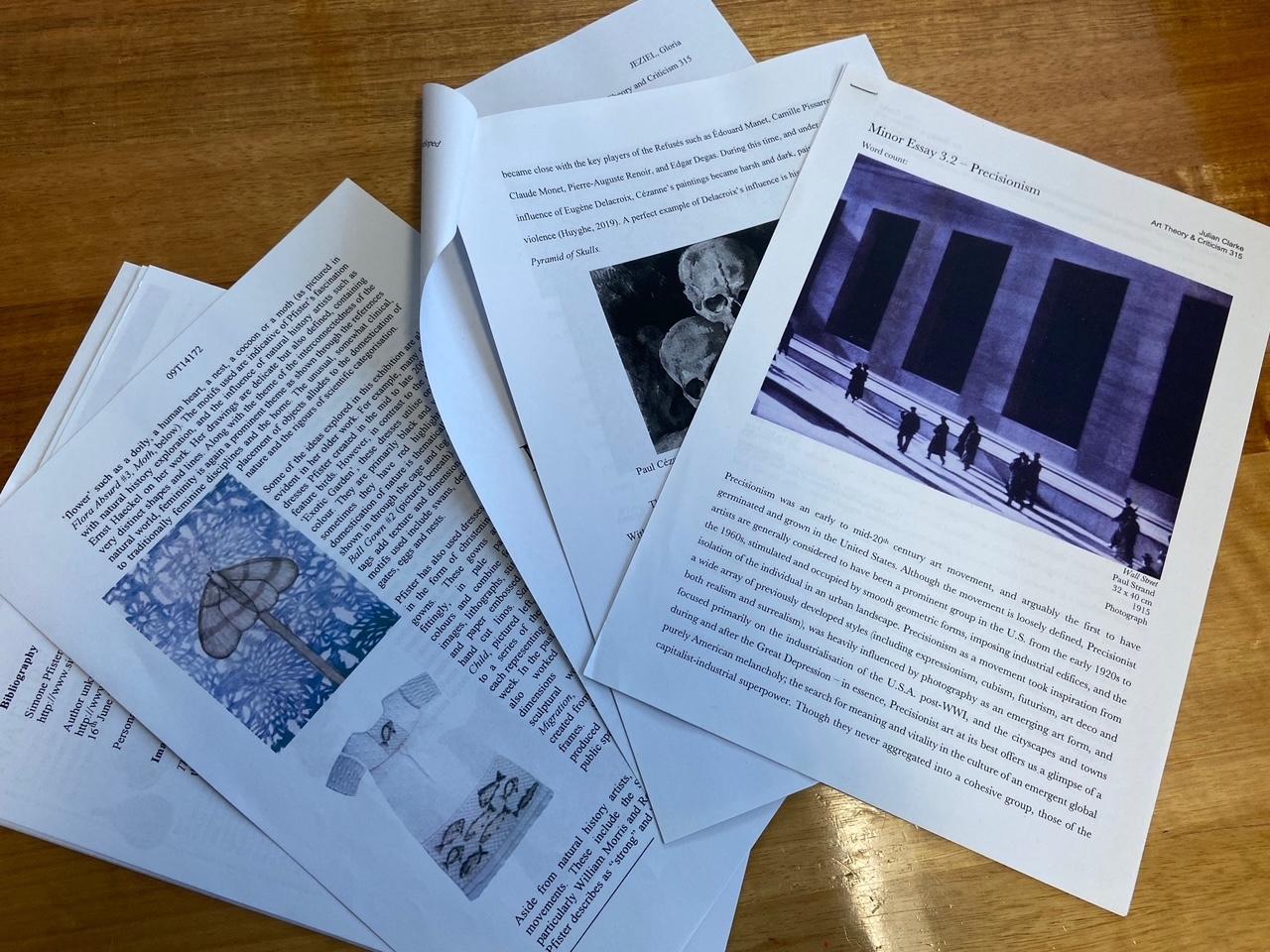TCE Art Theory & Criticism Level 3

TCE Art Theory & Criticism Level 3
| 🎓Course Type | Pre-tertiary |
|---|---|
| TASC Code | ARA315116 |
| TCE Points | 15 |
| ⏱Hours | 150 |
| ✔️Standard | Reading and Writing (Literacy) Computers and Internet (ICT) |
| 📚Prerequisites | NA |
📎Desirable prior experiences | Suitable for students who have an interest in the Arts and enjoy writing |
| 📝Assessment | Internal - 8 x minor assessments External - Major Research Project (4000 - 6000 words) |
What will I learn?
Art Theory and Criticism is a course that does not involve making art or sitting an exam. It is designed to introduce students to significant historical and contemporary developments in the visual arts, both in a local and global setting. Students studying this course will be encouraged to investigate richly diverse areas of art practice such as architecture, curating, jewellery making, design, arts administration, urban planning, fine art and street art. The course is designed to help students analyse the content, form and context of art and artistic practice using political, social and cultural perspectives.
Areas of study might have a vocational focus (e.g. furniture designer, historian, archaeologist) or may aim to satisfy a curiosity about the role of art in a social context (e.g. community painting at Yuendumu, the funding of arts festivals, the spiritual role of art making).
Skills in art criticism, art appreciation and art analysis will develop along with students’ confidence in expressing themselves in varied and original ways.
A high level of research skills, motivation to pursue information from a variety of sources, organisational skills and the ability to present ideas are required for success in this course.
Art Theory and Criticism belongs to a suite of Level 3 courses in the visual arts. It is the most theoretical of the three courses that have visual art as the underpinning knowledge.
The course is composed of six compulsory units:
- Unit 1 Visual Analysis and Interpretation
- Unit 2 Themes and Styles
- Unit 3 Movements
- Unit 4 Comparative Studies
- Unit 5 Arts Criticism
- Unit 6 Major Study
Why should I consider this course?
- You are motivated to inquire about the social, cultural and chronological history of the visual arts
- You love thinking about, discussing and writing about Art Theory and Criticism
What Skills does this course provide?
On successful completion of this course, learners will be able to:
- communicate about visual art works and contexts in oral/signed and written form
- describe visual art in its cultural, social and historical contexts
- identify significant concepts and principles of art theory
- apply knowledge of artistic content and concepts to make judgements regarding art works
- assess form and composition using visual art language
- articulate connections between personal experience and the visual arts
- employ critical thinking, organisational and research skills in analysis of visual art
- assess primary and secondary sources, their usefulness, reliability and contest-ability to resolve a visual art question
- apply principles of academic integrity
- engage with local, national and global visual art communities to expand knowledge and appreciation of visual arts, artists and art movements
- apply time management, planning and negotiation skills to visual arts inquiry
What Pathway Options does this course provide?
Art Theory and Criticism encourages learners to be confident, think critically and be innovative. It deepens and broadens the knowledge and appreciation of those learners destined to become designers, architects, artists, arts administrators, exhibition curators, art critics or art gallery directors. Art Theory and Criticism provides tertiary pathways as theory majors at bachelor level and through research by higher degree (RHD) courses.

